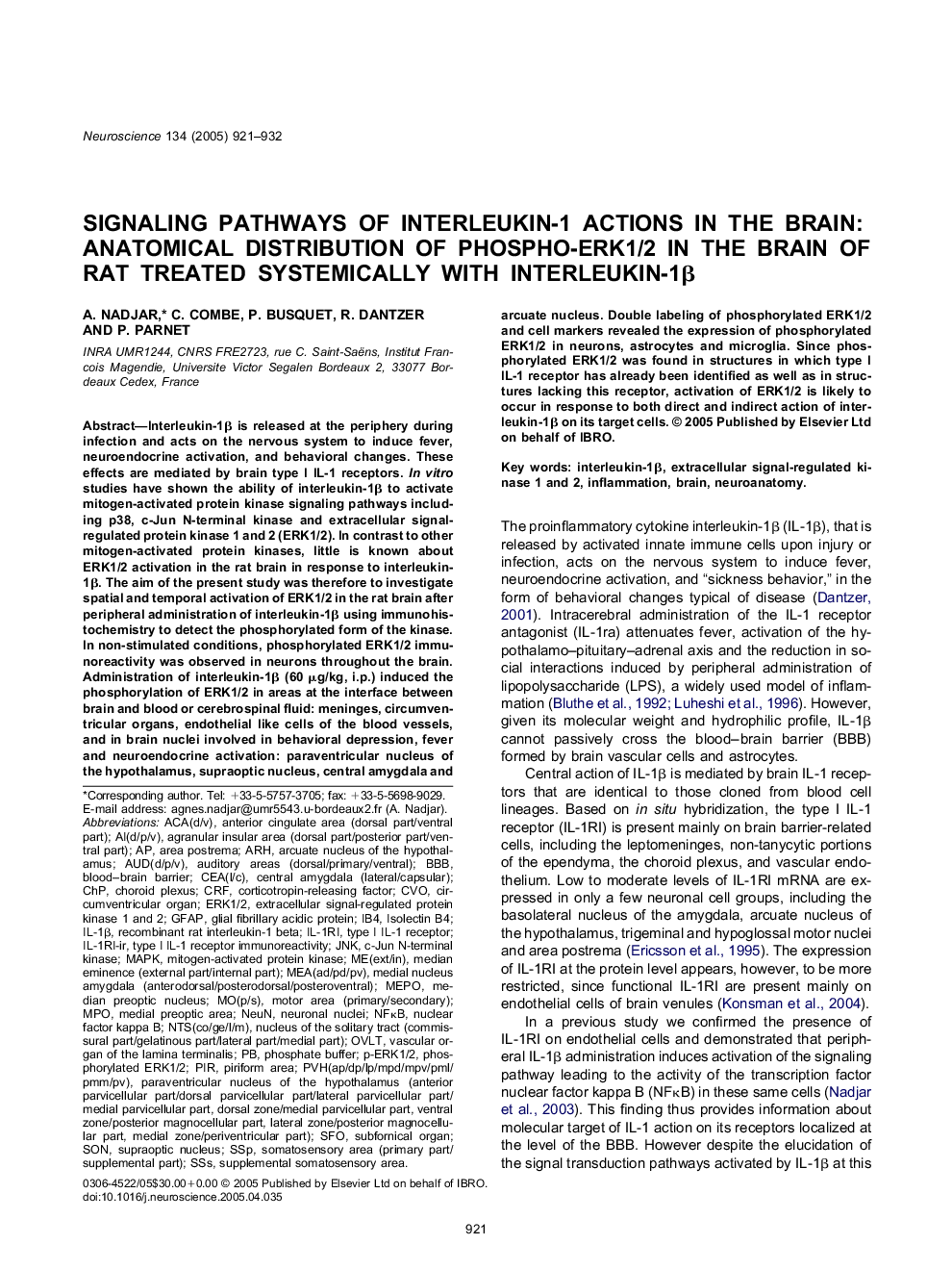| Article ID | Journal | Published Year | Pages | File Type |
|---|---|---|---|---|
| 9426592 | Neuroscience | 2005 | 12 Pages |
Abstract
Interleukin-1β is released at the periphery during infection and acts on the nervous system to induce fever, neuroendocrine activation, and behavioral changes. These effects are mediated by brain type I IL-1 receptors. In vitro studies have shown the ability of interleukin-1β to activate mitogen-activated protein kinase signaling pathways including p38, c-Jun N-terminal kinase and extracellular signal-regulated protein kinase 1 and 2 (ERK1/2). In contrast to other mitogen-activated protein kinases, little is known about ERK1/2 activation in the rat brain in response to interleukin-1β. The aim of the present study was therefore to investigate spatial and temporal activation of ERK1/2 in the rat brain after peripheral administration of interleukin-1β using immunohistochemistry to detect the phosphorylated form of the kinase. In non-stimulated conditions, phosphorylated ERK1/2 immunoreactivity was observed in neurons throughout the brain. Administration of interleukin-1β (60μg/kg, i.p.) induced the phosphorylation of ERK1/2 in areas at the interface between brain and blood or cerebrospinal fluid: meninges, circumventricular organs, endothelial like cells of the blood vessels, and in brain nuclei involved in behavioral depression, fever and neuroendocrine activation: paraventricular nucleus of the hypothalamus, supraoptic nucleus, central amygdala and arcuate nucleus. Double labeling of phosphorylated ERK1/2 and cell markers revealed the expression of phosphorylated ERK1/2 in neurons, astrocytes and microglia. Since phosphorylated ERK1/2 was found in structures in which type I IL-1 receptor has already been identified as well as in structures lacking this receptor, activation of ERK1/2 is likely to occur in response to both direct and indirect action of interleukin-1β on its target cells.
Keywords
IL-1βSSPphosphorylated ERK1/2OVLTARHCVOIB4IL-1RINeuNCRFSFOGFAPSSSJnkCHPc-Jun N-terminal kinaseMPOERK1/2MAPKNFκBp-ERK1/2vascular organ of the lamina terminalisinflammationisolectin B4Interleukin-1βphosphate bufferPirBBBarea postremacorticotropin-releasing factorSubfornical organCircumventricular organnuclear factor kappa BSONBlood-brain barrierBrainmedial preoptic areaNeuroanatomySupraoptic nucleusarcuate nucleus of the hypothalamusneuronal nucleimedian preoptic nucleusGlial fibrillary acidic proteinmitogen-activated protein kinaseChoroid plexusextracellular signal-regulated kinase 1 and 2
Related Topics
Life Sciences
Neuroscience
Neuroscience (General)
Authors
A. Nadjar, C. Combe, P. Busquet, R. Dantzer, P. Parnet,
